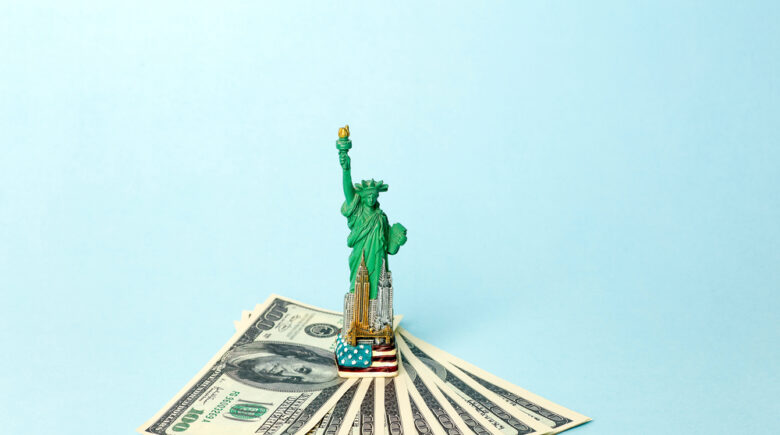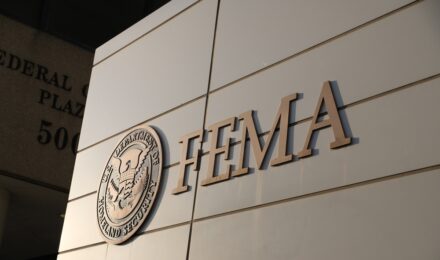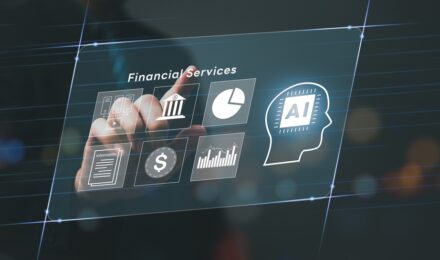Few institutions influence personal finance in the United States as directly as the Federal Reserve. Its decisions on interest rates ripple through nearly every aspect of household money management, from the cost of borrowing to the returns on savings. In 2025, with the Fed navigating inflationary pressures and slower economic growth, rate policy has once again taken center stage.
This article explains how the Fed’s most recent interest rate decisions affect everyday finances, including loans, credit cards, mortgages, savings, and investments.
Understanding the Fed’s Role
The Federal Reserve sets the federal funds rate, the benchmark rate at which banks lend to one another overnight. Although consumers do not borrow at this rate directly, it influences nearly all other interest rates across the economy. When the Fed raises rates, borrowing becomes more expensive, but savers benefit from higher yields. When the Fed cuts rates, loans become cheaper, but deposit returns tend to shrink.
In 2025, the Fed has maintained elevated rates to stabilize inflation, while signaling possible adjustments if economic growth slows further. These decisions carry immediate consequences for households and small businesses alike.
Borrowing Costs: Loans and Credit Cards
One of the most visible effects of Fed policy is the cost of borrowing. Credit card APRs, which are tied closely to the prime rate, now average above 22%, a direct result of elevated federal funds rates. For consumers carrying balances, this translates to higher monthly interest charges and greater difficulty paying down debt.
Personal loans and auto loans are also affected. Rates on unsecured personal loans vary widely depending on creditworthiness, but averages remain several percentage points higher than before the Fed’s tightening cycle. Auto financing has become costlier as well, raising the total expense of purchasing vehicles. For borrowers, rate policy underscores the importance of shopping carefully and maintaining strong credit to secure the lowest available offers.
Mortgages and Housing Affordability
Mortgage rates remain one of the most sensitive areas impacted by Fed policy. Thirty-year fixed mortgage rates are hovering around multi-decade highs, making monthly payments significantly larger for new buyers. This has cooled housing demand in many markets, slowing price growth but also making ownership less accessible for first-time buyers.
Refinancing opportunities are limited in the current environment. Homeowners who locked in historically low rates earlier in the decade are holding onto them, while those with adjustable-rate mortgages are seeing higher payments as rates reset. The Fed’s decisions on future cuts or hikes will continue to shape the housing market and affordability trends.
Savings and Deposits
On the positive side, savers benefit from higher interest rates. High-yield savings accounts and certificates of deposit (CDs) now offer yields above 4% in many cases, levels unseen for years. This has encouraged households to hold more cash in insured deposit products rather than keeping funds idle in checking accounts.
Money market accounts and short-term Treasury securities are also attractive options, offering competitive yields with low risk. The Fed’s current stance provides an opportunity for savers to strengthen their emergency funds and short-term reserves.
Investments and Retirement Accounts
For investors, higher rates present both challenges and opportunities. Bond yields have risen, providing more attractive fixed-income options for retirement portfolios. However, equities have faced pressure, as elevated rates tend to slow corporate borrowing and dampen growth expectations.
Real estate investment trusts (REITs) and other interest-sensitive sectors have also experienced volatility. At the same time, savers approaching retirement may welcome higher yields on safe assets, which can reduce reliance on stock market growth. Long-term investors should continue to diversify across asset classes while remaining mindful of Fed policy signals.
Inflation and Purchasing Power
The ultimate goal of the Fed’s rate decisions is to keep inflation under control. Elevated borrowing costs are intended to reduce demand, which in turn helps stabilize prices. For households, this translates to slower growth in everyday expenses, though the trade-off is higher costs for credit. The balance between inflation control and economic growth remains delicate, and consumers will feel the effects in both their wallets and their job markets.
Looking Ahead: What to Expect
The Fed has indicated that its policy path in 2025 will depend heavily on incoming data. If inflation continues to moderate, the central bank may begin cutting rates later in the year. Such a shift would lower borrowing costs but also reduce the yield advantages currently enjoyed by savers. Conversely, if inflation remains stubborn, rates could stay higher for longer, prolonging the current environment of expensive credit.
Conclusion
The Federal Reserve’s interest rate decisions in 2025 affect nearly every household. Borrowers face higher costs on credit cards, mortgages, and personal loans, while savers enjoy stronger returns on deposits. Investors must navigate both opportunities in fixed-income markets and challenges in equities. Staying informed about Fed policy helps individuals make smarter financial decisions, from refinancing choices to savings strategies, ensuring they can adapt as economic conditions evolve.
References
- Federal Reserve – Monetary Policy Statements
- Bankrate – Interest Rate Trends
- Consumer Financial Protection Bureau – Credit Guidance
- Morningstar – Investment Analysis and Commentary
Few institutions influence personal finance in the United States as directly as the Federal Reserve. Its decisions on interest rates ripple through nearly every aspect of household money management, from the cost of borrowing to the returns on savings. In 2025, with the Fed navigating inflationary pressures and slower economic growth, rate policy has once again taken center stage.
This article explains how the Fed’s most recent interest rate decisions affect everyday finances, including loans, credit cards, mortgages, savings, and investments.
Understanding the Fed’s Role
The Federal Reserve sets the federal funds rate, the benchmark rate at which banks lend to one another overnight. Although consumers do not borrow at this rate directly, it influences nearly all other interest rates across the economy. When the Fed raises rates, borrowing becomes more expensive, but savers benefit from higher yields. When the Fed cuts rates, loans become cheaper, but deposit returns tend to shrink.
In 2025, the Fed has maintained elevated rates to stabilize inflation, while signaling possible adjustments if economic growth slows further. These decisions carry immediate consequences for households and small businesses alike.
Borrowing Costs: Loans and Credit Cards
One of the most visible effects of Fed policy is the cost of borrowing. Credit card APRs, which are tied closely to the prime rate, now average above 22%, a direct result of elevated federal funds rates. For consumers carrying balances, this translates to higher monthly interest charges and greater difficulty paying down debt.
Personal loans and auto loans are also affected. Rates on unsecured personal loans vary widely depending on creditworthiness, but averages remain several percentage points higher than before the Fed’s tightening cycle. Auto financing has become costlier as well, raising the total expense of purchasing vehicles. For borrowers, rate policy underscores the importance of shopping carefully and maintaining strong credit to secure the lowest available offers.
Mortgages and Housing Affordability
Mortgage rates remain one of the most sensitive areas impacted by Fed policy. Thirty-year fixed mortgage rates are hovering around multi-decade highs, making monthly payments significantly larger for new buyers. This has cooled housing demand in many markets, slowing price growth but also making ownership less accessible for first-time buyers.
Refinancing opportunities are limited in the current environment. Homeowners who locked in historically low rates earlier in the decade are holding onto them, while those with adjustable-rate mortgages are seeing higher payments as rates reset. The Fed’s decisions on future cuts or hikes will continue to shape the housing market and affordability trends.
Savings and Deposits
On the positive side, savers benefit from higher interest rates. High-yield savings accounts and certificates of deposit (CDs) now offer yields above 4% in many cases, levels unseen for years. This has encouraged households to hold more cash in insured deposit products rather than keeping funds idle in checking accounts.
Money market accounts and short-term Treasury securities are also attractive options, offering competitive yields with low risk. The Fed’s current stance provides an opportunity for savers to strengthen their emergency funds and short-term reserves.
Investments and Retirement Accounts
For investors, higher rates present both challenges and opportunities. Bond yields have risen, providing more attractive fixed-income options for retirement portfolios. However, equities have faced pressure, as elevated rates tend to slow corporate borrowing and dampen growth expectations.
Real estate investment trusts (REITs) and other interest-sensitive sectors have also experienced volatility. At the same time, savers approaching retirement may welcome higher yields on safe assets, which can reduce reliance on stock market growth. Long-term investors should continue to diversify across asset classes while remaining mindful of Fed policy signals.
Inflation and Purchasing Power
The ultimate goal of the Fed’s rate decisions is to keep inflation under control. Elevated borrowing costs are intended to reduce demand, which in turn helps stabilize prices. For households, this translates to slower growth in everyday expenses, though the trade-off is higher costs for credit. The balance between inflation control and economic growth remains delicate, and consumers will feel the effects in both their wallets and their job markets.
Looking Ahead: What to Expect
The Fed has indicated that its policy path in 2025 will depend heavily on incoming data. If inflation continues to moderate, the central bank may begin cutting rates later in the year. Such a shift would lower borrowing costs but also reduce the yield advantages currently enjoyed by savers. Conversely, if inflation remains stubborn, rates could stay higher for longer, prolonging the current environment of expensive credit.
Conclusion
The Federal Reserve’s interest rate decisions in 2025 affect nearly every household. Borrowers face higher costs on credit cards, mortgages, and personal loans, while savers enjoy stronger returns on deposits. Investors must navigate both opportunities in fixed-income markets and challenges in equities. Staying informed about Fed policy helps individuals make smarter financial decisions, from refinancing choices to savings strategies, ensuring they can adapt as economic conditions evolve.







